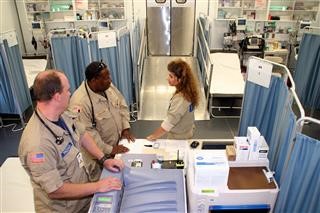The Infertility Organization
Klinefelter Syndrome and Infertility
You found the complete source for total info and resources for Klinefelter Syndrome and Infertility online.
Primary sterility is the complete inability to become pregnant, while secondary sterility refers to the failure to conceive after a previous successful pregnancy. Understanding what’s causing your fertility difficulties can help you find out what treatment is right for you and your partner.Fertility What is Normal Fertility and When Does it Become Infertility? High Fertilization and Pregnancy Rate after Intracytoplasmic Sperm Injection with Spermatozoa Obtained from Testicle Biopsy. (PDF, 3 MB) Human Reproduction, 1995.
Normal Pregnancies Resulting from Testicular Sperm Extraction and Intracytoplasmic Sperm Injection for Azoospermia Due to Maturation Arrest. (PDF, 6 MB) Fertility and Sterility, 1996. According to the literature survey, the most common causes of infertility are: male factor [5,7-9,13-15] such as sperm abnormalities [9,13,15], female factor [7-9,14-16] such as ovulation dysfunction [7,8] and tubal pathology [7-9], combined male and female factors [7,9,14,15] and unexplained infertility; where no obvious cause could be detected [7-9]. Chronic anovulation is a common cause of infertility.
Below are Some More Resources on Klinefelter Syndrome and Infertility

More Info Around Nurses Responsibility in Infertility
The new definitions drawn up by WHO’s international committee monitoring assisted reproductive technology will be sent to every health minister for consideration next year.Sterility, also referred to as infertility, is defined as an inability to conceive a child after trying to do so for at least one year. Your doctor will analyze your semen analysis carefully and help you decide if ICSI is an appropriate treatment for you. In these cases the duration of the infertility is the best parameter by which to judge the chances of future natural conception; the longer the time of infertility then the sooner intervention should be considered.Summary Infertility is a term doctors use if a man hasn't been able to get a woman pregnant after at least one year of trying. While it may be difficult to detect infertility symptoms outright, here are some signs that may point to fertility issues: Irregular periods: The average woman’s cycle is about 28 days long. A defect in any of these sperm structures may result in infertility that will not be detected by semen analysis.[60] Antisperm antibodies cause immune infertility.[23][24] Cystic fibrosis can lead to infertility in men.
Even more Information Around Unexplained Infertility and Recurrent Miscarriage
Vitrification of oocytes from endangered Mexican gray wolves (Canis lupus baileyi). (PDF, 319 KB) Theriogenology, 2010. 6,28 Additionally, postcoital testing of cervical mucus is no longer recommended because it does not affect clinical management or predict the inability to conceive. Some respond by actively avoiding the issue altogether; middle-class men are the most likely to respond in this way.[21] In the United States some treatments for infertility, including diagnostic tests, surgery and therapy for depression, can qualify one for Family and Medical Leave Act leave. Predominantly anovulation is caused by hormonal imbalances such as Polycystic Ovarian Syndrome (PCOS) but ovarian scarring and premature menopause can also result in failure to ovulate. • Tubal disease, comprising anything from mild adhesions to complete blockage of the fallopian tubes, prevents fertilised eggs from travelling from the site of fertilisation to the uterus.
Even more Info Around Unexplained Infertility and Recurrent Miscarriage
With this treatment, the patient experience spermatogenesis, and therefore, it has the chance to have offspring if he wants to. The predictable pregnancy rate for this group is about 5% after timed intercourse, 10% after superovulation with intrauterine insemination (IUI), and 15% to 25% after assisted reproduction techniques (ART) [41]. Hystersalpingography (HSG): - usually after failed successive cycles of ovulation induction, and in some centres after failed IUI. - good predictive but requires expertise. This technique involves an injection of a single healthy sperm directly injected into mature egg. In fact, the “window of opportunity” for fertilization is thought to last only a few hours, thus requiring sperm availability in the female genital tract at or shortly before ovulation. If the sperm do not have the right shape, or they cannot travel rapidly and accurately towards the egg, conception may be difficult. Microscopic Vasectomy Reversal. (PDF, 31 MB) Fertility and Sterility, 1977. Which drug can be used for induction of ovulation? According to ESHRE recommendations, couples with an estimated live birth rate of 40% or higher per year are encouraged to continue aiming for a spontaneous pregnancy.[66] Treatment methods for infertility may be grouped as medical or complementary and alternative treatments. If the cilial epithelium has been destroyed, the outcome of the procedure is poor, and it is better to perform a salpingectomy in preparation for future IVF.
Previous Next
See also
Infertility Uae
Infertility With Regular Periods
Infertility After Early Miscarriage